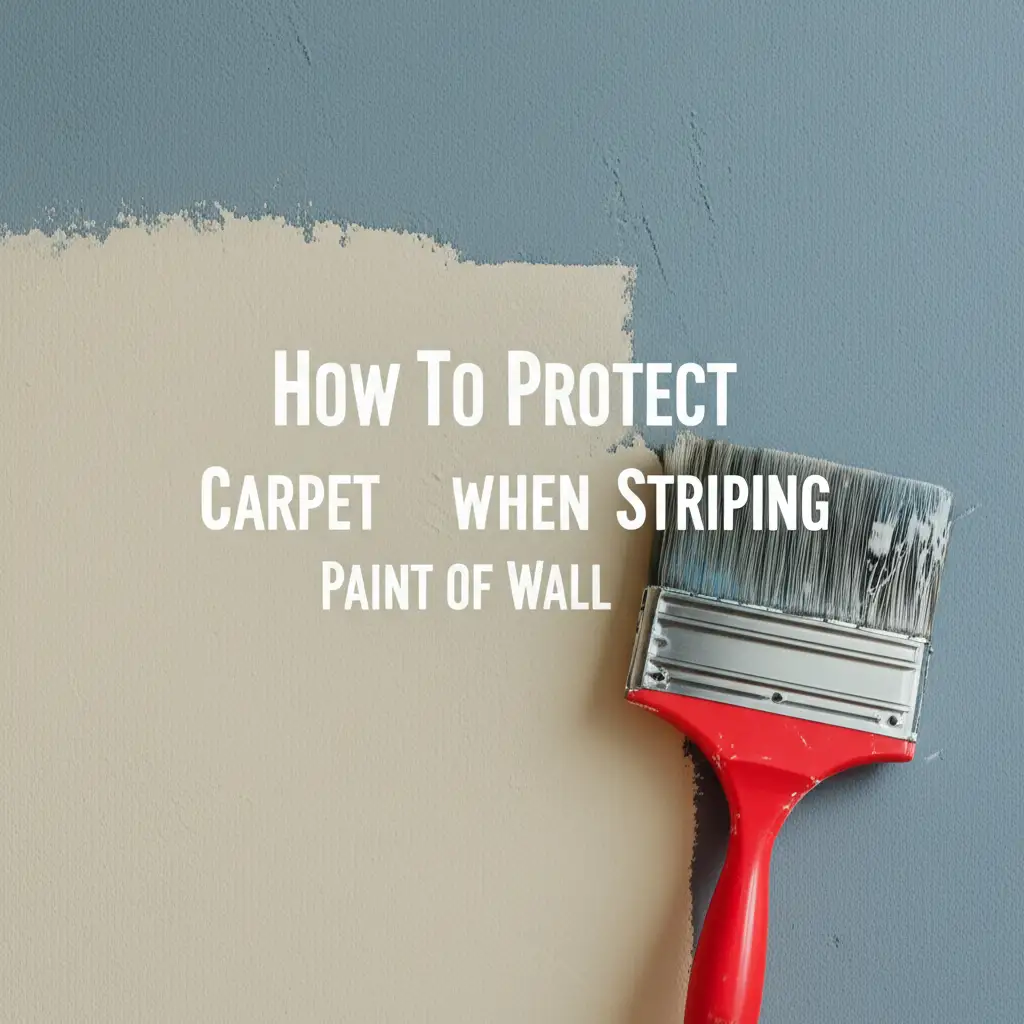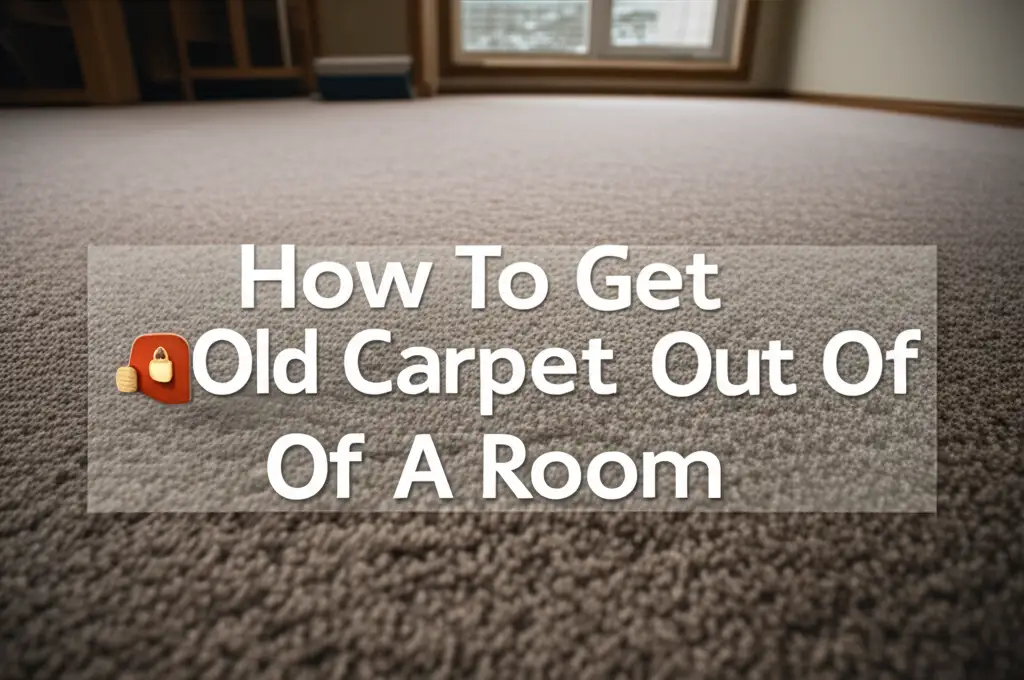· Elira Thomsen · Home Improvement · 13 min read
How To Protect Carpet When Striping Paint Of Wall

Protect Your Carpet When Stripping Paint
Starting a home improvement project can be exciting. Thinking about new colors or a fresh look for your walls fills you with anticipation. However, when the task involves stripping old paint, it brings a unique set of challenges. Paint stripping is a messy job. Chemicals, paint chips, and dust can easily fall and damage your flooring. If you have carpet, this risk becomes even greater. You need to know how to protect carpet when stripping paint off walls. I want to help you prevent costly damage. This guide will walk you through essential preparation steps, the best materials to use, and smart cleanup strategies. You can keep your carpet safe and your project on track.
Takeaway: Keep Your Carpet Safe
- Clear the room completely. Remove all furniture and wall decor.
- Use proper protection materials. Invest in heavy-duty drop cloths or plastic sheeting.
- Seal edges thoroughly. Use painter’s tape to secure all protective layers.
- Ventilate the area well. Open windows and use fans for airflow.
- Clean spills immediately. Address any paint or stripper drips right away.
To protect carpet when stripping paint off walls, first clear the room completely. Then, lay down heavy-duty plastic sheeting or canvas drop cloths, ensuring they extend several feet from the wall. Secure all edges with painter’s tape to create a sealed barrier. This prevents any paint chips or chemicals from reaching your carpet.
Essential First Steps: Clearing and Cleaning the Work Area
Preparing your room before you start paint stripping is very important. This initial phase sets the stage for a clean and safe project. A well-prepared space reduces the chances of accidents and makes cleanup easier later. My first advice is always to empty the room as much as possible.
You should remove all furniture, rugs, and decorative items from the area. This prevents them from getting damaged by paint, stripper, or dust. If you cannot move larger items, push them to the center of the room. Cover them completely with plastic sheeting. Secure the plastic with tape to keep dust and debris out. This simple step saves you a lot of cleaning work later. It also gives you more space to move around safely while working.
Next, you need to clean the walls and floor. Use a damp cloth to wipe down the walls. This removes any loose dust or cobwebs. A clean surface helps the paint stripper work better. On the carpet, vacuum thoroughly. Make sure there is no loose dirt or debris. A clean carpet surface helps protective coverings lie flat and seal better. This prevents small particles from getting trapped underneath and causing issues. These steps are simple but make a big difference in protecting your carpet effectively.
Choosing the Right Protective Barriers for Your Carpet
Selecting the correct materials is key to protecting your carpet from paint stripper and debris. Not all protective coverings offer the same level of safety. You need materials that are durable and resistant to chemicals. Choosing wisely can prevent costly damage to your flooring. I always suggest using a multi-layered approach for the best protection.
The first layer should be heavy-duty plastic sheeting. This plastic acts as a moisture barrier. It stops any liquid, like paint stripper or dissolved paint, from soaking through. Look for plastic sheeting that is at least 6 mil thick. Thinner plastic can tear easily or allow liquids to seep through. Spread this plastic sheeting over the entire carpet area you wish to protect. Make sure it extends several feet beyond the walls you are stripping. This creates a wide safety zone.
On top of the plastic sheeting, lay down canvas drop cloths. Canvas drop cloths are great because they are absorbent. They catch paint chips and liquid drips. They also provide a non-slip surface, which makes working safer. While plastic can be slippery, canvas offers better footing. Choose heavy-duty canvas drop cloths for maximum protection. The combination of plastic underneath and canvas on top gives you the best defense. This dual-layer system ensures that your carpet stays dry and clean throughout the paint stripping process. For more detailed information on what materials you can use, consider reading about what can i put over carpet to protect it.
Effective Application of Floor Protection
Applying your protective layers correctly is just as important as choosing the right materials. A poorly installed barrier offers little protection. Proper installation ensures that no gaps allow paint or stripper to reach your carpet. I always make sure every edge is secure.
Start by unrolling your heavy-duty plastic sheeting. Lay it flat across the entire carpeted area. Overlap seams by at least 6 to 12 inches if you need more than one sheet. This overlap creates a continuous, unbroken barrier. Make sure the plastic extends from the wall you are working on, out several feet into the room. This provides a generous safety margin. You want to catch all drips and falling debris.
Next, secure the plastic sheeting with painter’s tape. Apply painter’s tape along all edges where the plastic meets the baseboard. Press the tape down firmly. This creates a tight seal. It prevents liquid from seeping under the plastic. Do not use masking tape or duct tape. Painter’s tape provides a good seal without leaving sticky residue on your baseboards or carpet if it touches. If the plastic sheeting is extensive, you might also tape the seams where sheets overlap. This adds extra security.
Finally, place your canvas drop cloths on top of the plastic sheeting. Ensure the canvas covers all the plastic. Overlap the canvas sheets slightly as well. The canvas adds an extra layer of absorption and prevents slips. Do not tape the canvas to the floor. Let it lie freely on top of the plastic. This allows for easier adjustment if needed during the project. This careful layering and sealing will give your carpet the best chance against paint stripper.
Advanced Techniques for Enhanced Carpet Safety
While basic protection layers are good, using advanced techniques can give your carpet even more security. These extra steps can be crucial when working with particularly strong paint strippers or if you are dealing with very old, stubborn paint. I have found these methods incredibly helpful in my own projects.
Consider creating a “skirt” around the base of the wall. This involves attaching a small piece of plastic sheeting directly to the wall, just above the baseboard. Let this plastic drape down onto your main floor protection. You can secure it to the wall with painter’s tape. This skirt catches any drips that might run down the wall before they even reach the baseboard or the main protective layers on the floor. It acts as an additional defense line.
Another advanced tip is to use absorbent mats or old towels directly against the baseboard, underneath your main drop cloths. Place these right where the wall meets the floor. These materials will soak up any small splashes or drips that might escape the primary barriers. They provide an emergency absorption layer. This is especially useful in tight corners or areas where the wall meets door frames, as these spots can be tricky to cover perfectly.
You might also consider using a thick layer of newspapers or cardboard underneath your plastic sheeting for very heavy-duty protection. This adds an extra physical barrier and absorption. While plastic stops liquids, cardboard can cushion against dropped tools or larger paint chips. Always ensure these layers are smooth and do not create tripping hazards. These advanced steps can provide great peace of mind.
Post-Stripping Cleanup and Carpet Care
After you finish stripping paint, the cleanup phase is very important. This is when you remove the protective layers and assess your carpet. Doing this carefully ensures no lingering hazards or missed spots. My cleanup process is methodical to avoid new messes.
First, carefully gather all paint chips, debris, and used stripper. Do not just roll up your drop cloths. This can cause contaminants to fall onto your now-exposed carpet. Use a dustpan and broom or a shop vacuum to pick up all solid waste from the surface of your canvas drop cloths. Collect it in a sturdy trash bag. This prevents paint chips from scattering when you remove the coverings.
Next, carefully roll up the canvas drop cloths. Start from the edges furthest from the wall you stripped, rolling inward. This keeps any remaining debris contained within the roll. Dispose of these cloths properly according to local waste guidelines, especially if they are heavily contaminated with paint or stripper. Remember, some paint strippers are chemical waste.
After removing the canvas, slowly peel up the painter’s tape securing your plastic sheeting. Then, carefully roll up the plastic layer, again starting from the edges. Ensure any liquid residue on the plastic stays on the inside of the roll. Once the plastic is gone, inspect your carpet closely. If you followed the steps correctly, your carpet should be clean and dry. If you find any small dust particles or bits of debris, vacuum the carpet again thoroughly. Proper cleanup helps preserve your carpet’s condition.
Handling Accidental Spills and Stains
Even with the best preparation, accidents can happen. A small drip or splash of paint or stripper can sometimes find its way onto your carpet. When this occurs, quick action is vital. The faster you act, the higher your chance of complete removal. I always keep my cleaning supplies ready.
For paint spills, do not let the paint dry. Blot the area immediately with a clean, white cloth. Do not rub, as this can spread the paint deeper into the carpet fibers. Change cloths often to avoid re-depositing paint. For fresh paint, often warm water and a little dish soap can help. For stubborn or dried paint, you might need a specialized carpet cleaner. You can find more tips on what gets paint out of carpet. If it’s old, dried paint that somehow got there, check out strategies for how to get old paint off carpet. Some specific types of paint, like acrylic, might need different approaches. Understanding does acrylic paint come out of carpet can be helpful.
If paint stripper spills, act even faster. Most paint strippers are harsh chemicals. They can damage carpet fibers quickly. Use a clean cloth to blot up as much stripper as possible immediately. Do not rub. Then, use a new cloth dampened with plain water to rinse the area. Blot dry. Repeat this process several times to dilute and remove the stripper. Follow the stripper manufacturer’s instructions for spill cleanup. Some strippers might require specific neutralizing agents. Always wear gloves when cleaning up stripper spills. If the stain persists or the carpet shows damage, it may require professional cleaning. Acting fast minimizes potential damage.
Safety Measures During Paint Stripping
Protecting your carpet is important, but personal safety is paramount when stripping paint. Paint strippers often contain strong chemicals. These chemicals can harm your skin, eyes, and lungs. Taking proper safety precautions protects both you and your home. I prioritize safety above all else.
Always ensure good ventilation in your work area. Open windows and doors to allow fresh air to circulate. If natural ventilation is not enough, use fans to create a cross-breeze. Point fans out of windows to draw fumes away from the room. Good airflow prevents the buildup of dangerous fumes. Breathing in these fumes can cause dizziness, nausea, or more serious health problems. Never work in a poorly ventilated space when using paint stripper.
Wear appropriate personal protective equipment (PPE). This includes chemical-resistant gloves. Standard work gloves will not protect you from strong strippers. You should also wear safety glasses or goggles to protect your eyes from splashes. A respirator is crucial to protect your lungs from fumes. Choose a respirator rated for organic vapors. Cover all exposed skin by wearing long-sleeved shirts and long pants. Old clothes are best, as they might get stained or damaged.
Keep a fire extinguisher nearby. Some paint strippers are flammable. Avoid open flames, pilot lights, or sparks in the work area. Keep children and pets away from the work zone. Dispose of used rags and paint stripper waste properly. Follow the manufacturer’s instructions for disposal. By following these safety rules, you ensure a safer working environment for your paint stripping project.
FAQ Section
Q1: What is the best material to protect carpet from paint stripper? A: The best protection involves a two-layer system. First, use heavy-duty plastic sheeting (at least 6 mil thick) directly on the carpet. This creates a waterproof barrier. On top of the plastic, place absorbent canvas drop cloths. The canvas catches debris and offers a non-slip surface, enhancing safety and spill absorption.
Q2: Can I reuse protective coverings like plastic sheeting or drop cloths? A: You can often reuse heavy-duty canvas drop cloths if they are not heavily soiled with paint or stripper. Shake them out outdoors and store them flat. Plastic sheeting, especially if it has come into contact with paint stripper or significant paint, is usually best for single-use due to potential tears or chemical contamination.
Q3: How do I remove paint stripper from carpet if it spills? A: If paint stripper spills, act immediately. Blot the area with a clean, white cloth. Do not rub. Then, repeatedly blot the area with a new cloth dampened with plain water to dilute and remove the stripper. Follow the stripper manufacturer’s instructions for specific cleanup advice, as some may require neutralizers.
Q4: Is ventilation important when stripping paint? A: Yes, ventilation is extremely important. Paint strippers release strong fumes that can be harmful to your health. Always work in a well-ventilated area by opening windows and doors. Use fans to create a cross-breeze, drawing fumes away from your workspace. Good airflow protects your respiratory system.
Q5: How long should I leave protective coverings on? A: Leave protective coverings in place until all paint stripping and initial cleanup are complete. This means after you have scraped all paint, disposed of the bulk of the debris, and are sure no further drips or splashes will occur. Remove them carefully to avoid dropping any remaining particles onto the carpet.
Conclusion
Stripping paint from walls can transform your living space, but it carries a significant risk to your carpet. Understanding how to protect carpet when stripping paint off walls is not just about cleanliness; it is about preserving your home’s value and avoiding unexpected costs. We have covered vital steps from clearing the room to selecting the right protective layers like heavy-duty plastic and canvas drop cloths. Proper application and even advanced techniques like creating a protective wall skirt further enhance carpet safety.
Remember, prompt action on spills and strict adherence to safety guidelines are also key to a successful project. By following these comprehensive steps, you can confidently tackle your paint stripping project. You will minimize risks to your carpet and ensure a smoother, cleaner outcome. Start your project with confidence, knowing your carpet is safe.





